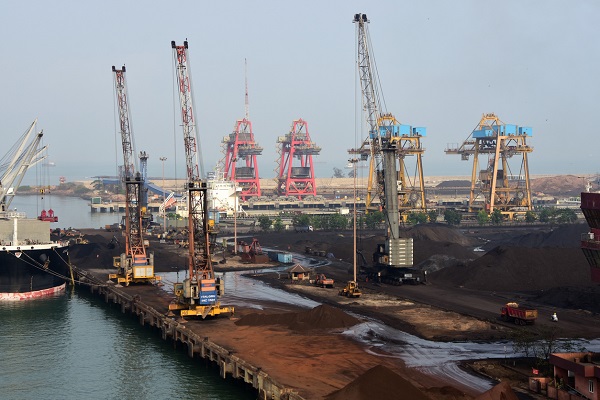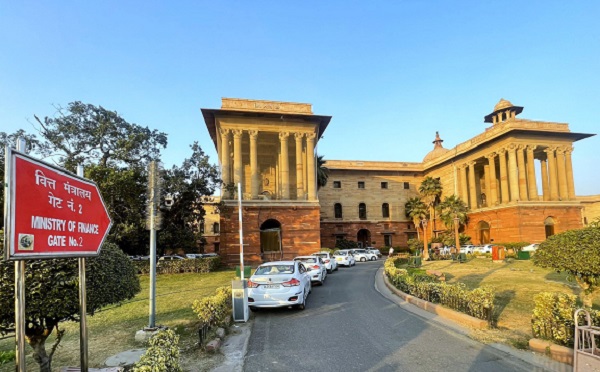.png)

Dr. Srinath Sridharan is a Corporate Advisor & Independent Director on Corporate Boards. He is the author of ‘Family and Dhanda’.
August 20, 2025 at 1:09 PM IST
The messy and one-sided global trade ‘uni-logue’ that America has started with tariffs is now more than just trade arithmetic. While it is fair to argue that America is an important market for many exporters globally, it is naïve to expect a complete kowtow to an importing nation.
At stake is the principle of whether a major economy can unilaterally impose its terms and expect compliance without consequence.
India’s refusal to accept such asymmetric bargains is not an act of defiance, but a conscious choice to safeguard its sovereignty in an age where economic power is increasingly deployed as an instrument of coercion.
A recent analysis laying out “seven possible endgames” for India in the unfolding tariff confrontation with the United States has the virtue of clarity. It enumerates probabilities, costs, and sectoral impacts, offering readers a scenario-mapping framework that policymakers often find useful in testing choices. Yet, while the arithmetic is cogent, the treatment of India’s strategic posture is less persuasive.
By framing resistance to unilateral US trade diktats as little more than a costly burden, it underplays India’s agency.
First, it flattens India’s choices into the language of survival, when in reality the issue is the careful preservation of policy space in a world where economic instruments are increasingly deployed as tools of coercion.
Second, it misses the point that resistance itself is not only a domestic calculation but also a signal to the wider international community that asymmetric bargains are neither inevitable nor acceptable. To characterise India’s calculus as defensive stubbornness is to misread a test of resilience and strategic patience.
India’s refusal to acquiesce must be situated in a broader geopolitical context. The European Union, Japan, South Korea, and the United Kingdom have each, in their own way, chosen accommodation with Washington’s demands. Only China and India have held back, though with vastly different instruments of leverage at their disposal.
For India, without China’s sheer market scale or geopolitical weight, resisting unilateral terms is a signal of intent. It is an assertion that strategic autonomy cannot be eroded simply because the costs of resistance are visible in the short run. Indeed, the very fact that Washington feels compelled to impose a country-specific tariff regime on India is an implicit recognition of India’s relevance in global trade flows, and in Washington’s broader design of leverage over other nations.
What is often overlooked is the domestic contradiction at the heart of America’s tariff play. While Washington talks of reviving manufacturing to “Make America Great Again,” the reality is that decades of financialisation have hollowed out its industrial skill base. US manufacturing employment peaked in the 1970s and has never recovered proportionally, even after recent onshoring incentives. The infrastructure of training, supply chains, and labour mobility that once underpinned American industrial prowess has eroded. To imagine that tariff walls alone can restore that ecosystem is to underestimate the depth of structural decay.
India, by contrast, is investing in the future of its industrial base—from semiconductors and defence manufacturing to space-tech and critical minerals. Critics may call this delayed or slow — and they would be right.
This is also why diversification is not simply a tactical move but a strategic one. By rebalancing exports towards ASEAN, Africa, Latin America, and Europe, India is embedding itself more deeply into the architecture of a multipolar economy. The gains may be incremental at first, but the long-term effect is to disperse risk, cultivate new alliances, and reduce dependence on any single trading partner.
Unlike India, which can gradually recalibrate its exports, Washington does not have the luxury of an easy pivot. The United States ceded much of its manufacturing base over decades of financialisation and offshoring, and the hollowing of its supply chains is now evident. In critical minerals, it remains almost entirely import dependent—100% for natural graphite and more than 80% for rare earths in 2024, with over half of supplies sourced from China. In pharmaceuticals, more than 70% of active ingredient production facilities are located overseas, concentrated in China and India. These are not vulnerabilities that can be reversed by campaign slogans or tariff walls. Reconstituting industrial capacity is not the work of an electoral cycle but of decades, requiring labour skills, supplier networks, and cost structures that cannot simply be conjured back.
Coalition-building magnifies this signal. By holding its ground, India creates political space for other middle powers such as Indonesia, Brazil, South Africa, or Vietnam to assert similar agency. In an environment where many states feel compelled to accommodate Washington for fear of retaliation, India’s refusal to fold demonstrates that alternatives exist. If New Delhi can weather tariffs and still maintain growth, others will be emboldened to resist asymmetry in their own negotiations. This is norm-setting not just for India’s sake but for the broader community of emerging economies.
The issue of energy exemplifies this agency. India’s decision to continue purchasing Russian oil is less a diplomatic indulgence than a rational exercise in fiscal prudence. It provides a cushion against volatility, moderates domestic inflation, and ensures that the economy does not absorb the full brunt of global uncertainty.
It is precisely this form of resilience that allows New Delhi to negotiate from strength rather than desperation. At the same time, the pursuit of long-term energy independence has been clearly articulated at the highest political level. Prime Minister Narendra Modi’s Independence Day address this year announced a deepwater exploration mission, alongside initiatives for self-reliance in critical minerals and fertilisers. These measures are strategic investments intended to reduce exposure to external vulnerability over the coming decades. As critics note, it may be late — but better late than never.
To appreciate why this posture is politically sustainable, one must also understand the domestic politics of resilience. Strategic autonomy is not a slogan imposed from the top; it resonates with the everyday concerns of farmers, MSMEs, and a middle class that is wary of external dependence. Protecting rural livelihoods through energy stability, safeguarding MSMEs from import surges, and investing in youth employment are the anchors of this strategy. When resilience is tied to constituencies, it ceases to be an abstract doctrine and becomes a lived political compact — giving New Delhi the room to endure costs in the short run for sovereignty in the long run.
At this point, sceptics may ask the obvious question: why should anyone buy the logic of Indian resilience? Tariffs are biting, exporters are losing market share, and MSMEs are exposed to job losses. How credible, then, is the claim that India’s posture is more than rhetorical bravado?
The answer lies in the multi-layered foundations of India’s endurance.
First, scale itself is a buffer. India remains the fastest-growing large economy, with a young consumer base that global firms cannot easily bypass. This demographic gravity creates leverage even amidst trade coercion.
Second, fiscal prudence matters. It is, in fact, a quiet but decisive tool of resilience. India’s careful management of currency stability, foreign reserves, and debt levels provides policymakers the room to withstand external shocks without immediate concessions. In a world where trade coercion can amplify financial vulnerability, India’s macroeconomic strength signals to counterparts that it can endure pressure without resorting to reactive compliance, further validating its long-term strategy.
Third, resilience is not passive absorption but active insulation. The announcements made in the Prime Minister’s Independence Day speech signal the structural investments that lie ahead.
Fourth, diversification away from the US is not about salvaging losses but about embedding India into a wider, multipolar trade system that reduces strategic capture.
Fifth, resistance itself is a form of norm-setting. This might spur domestic industrial resurgence and greater urgency in the domestic market. Politically, this may also become the new mantra for accepting short-term economic pain, as long as visible signs of Indian industrial expansion start emerging.
Seen in this light, India’s current stance is strategic demonstration. And by situating these measures within the broader narrative of Viksit Bharat, it is projecting to both domestic and external audiences that the contest over tariffs is not merely about short-term costs but about shaping the conditions of India’s rise.




